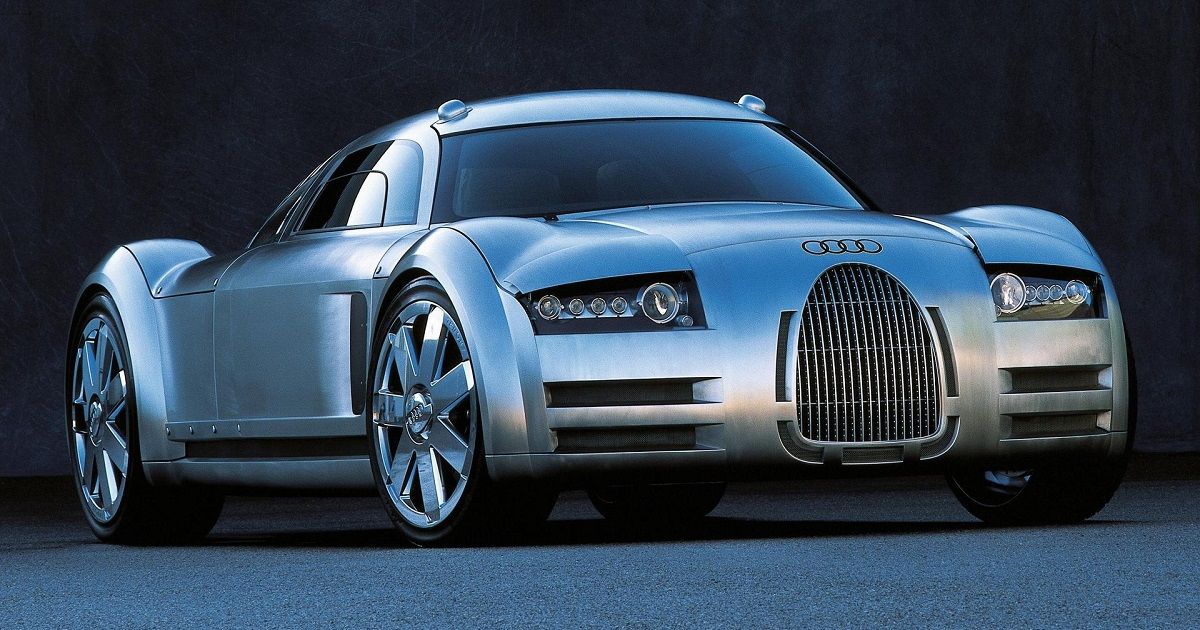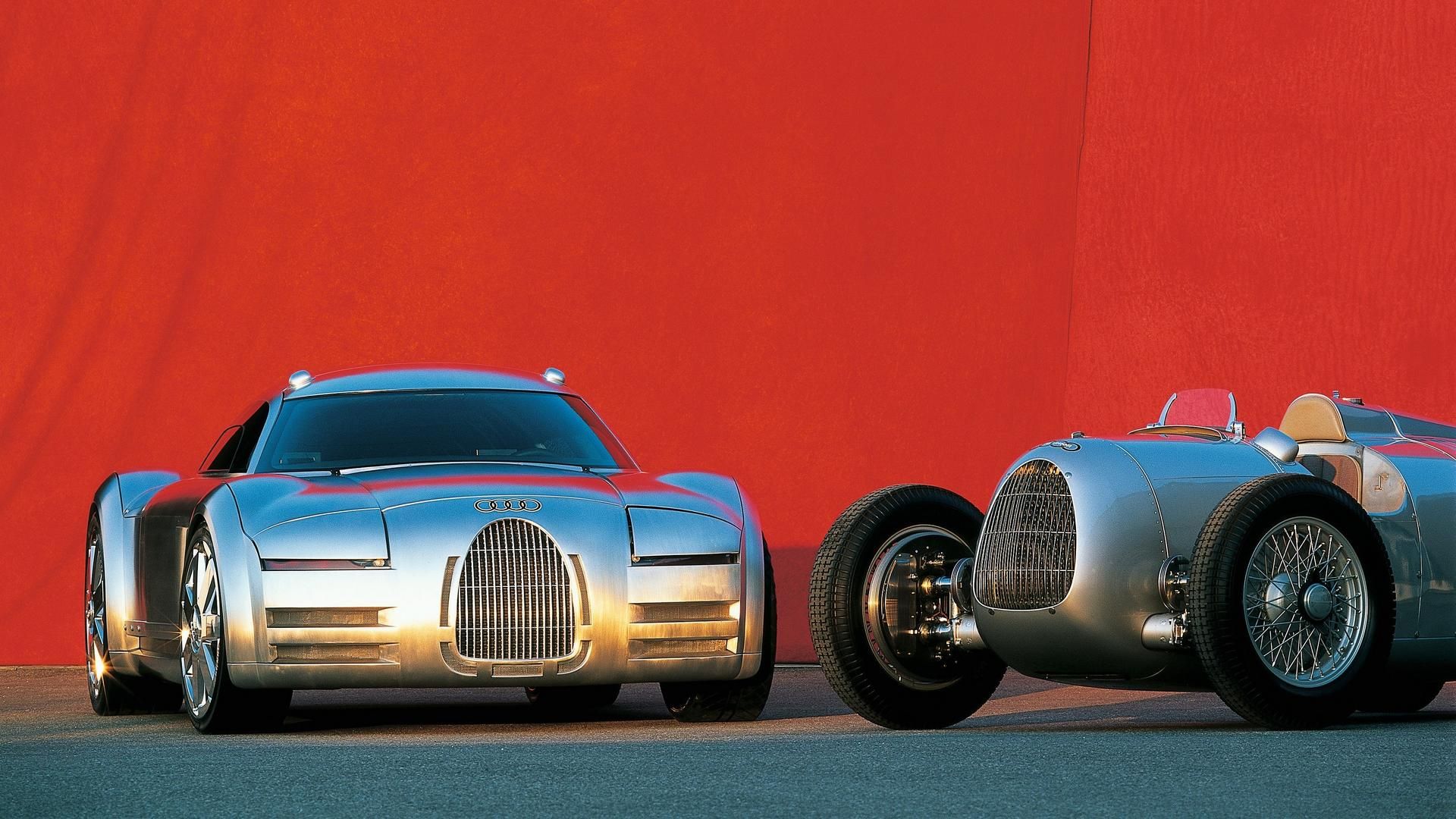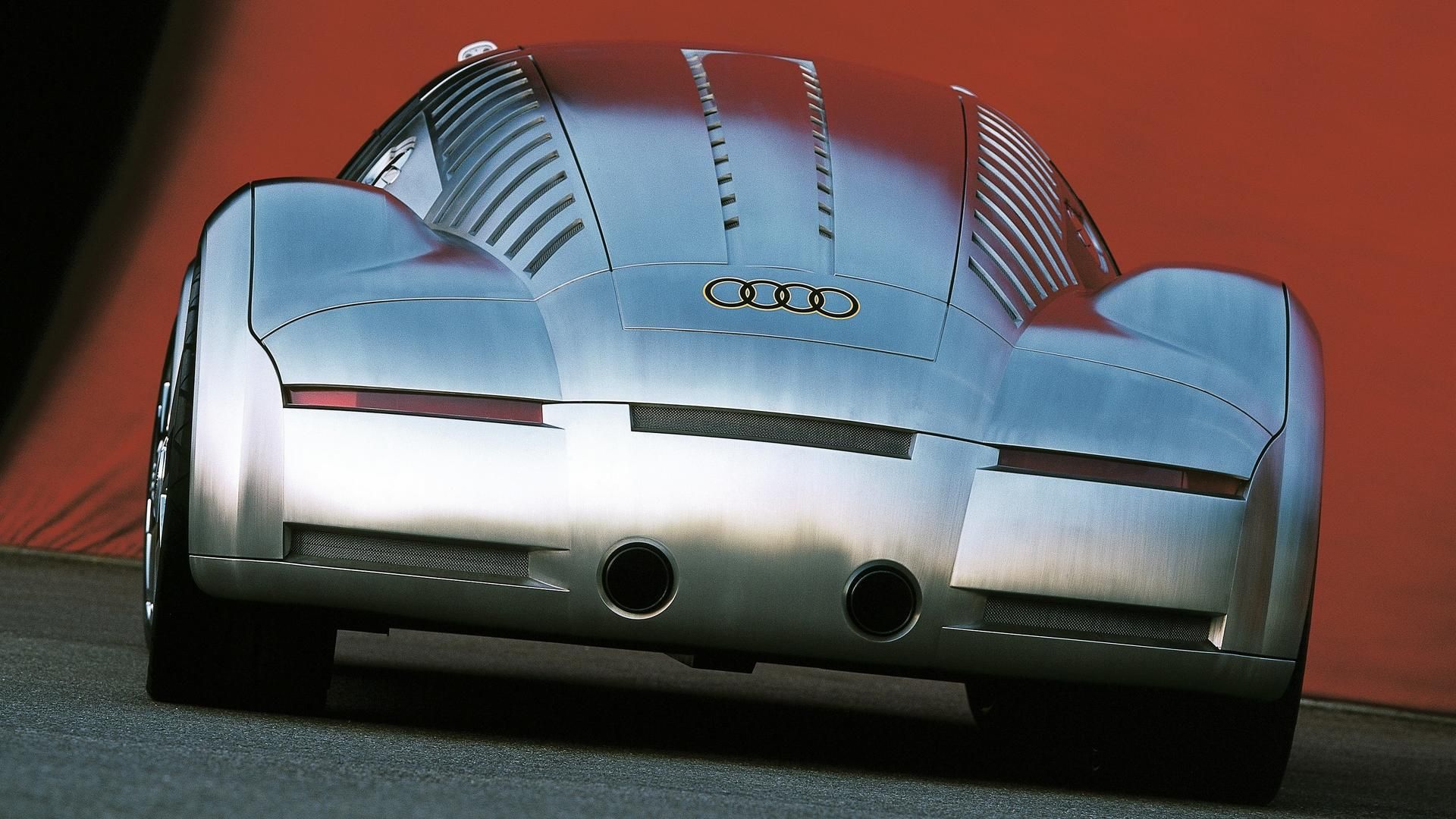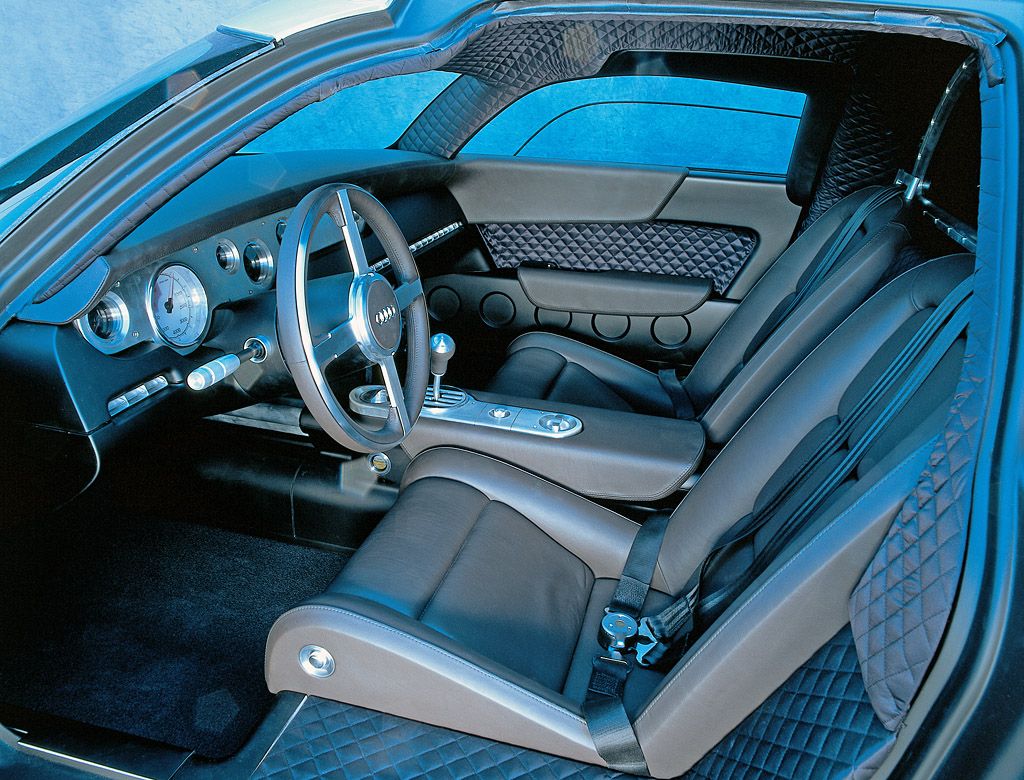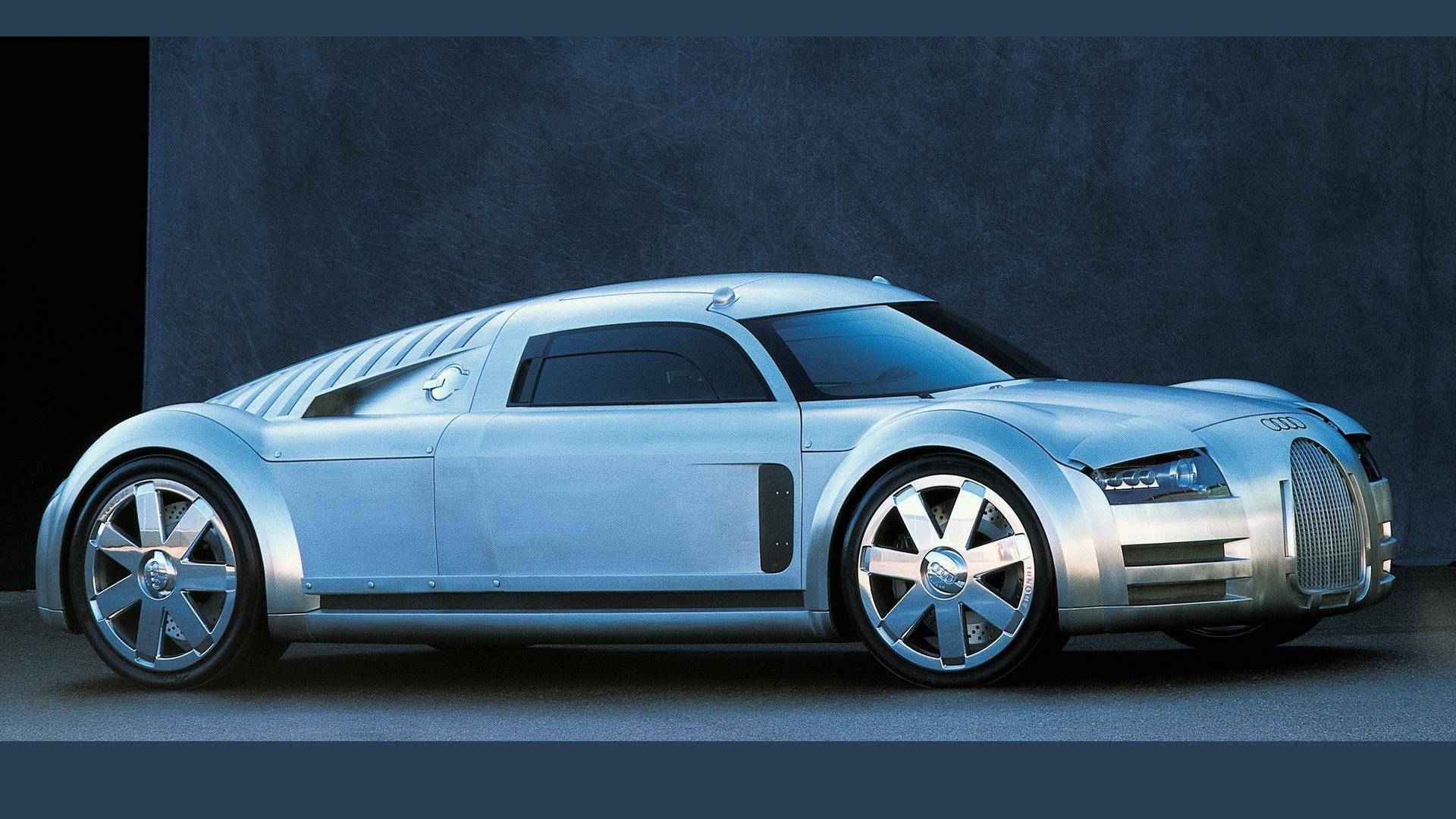Back in the early noughties car makers were in better fiscal conditions, and the world had yet to become particularly environmentally-concerned. So designers and engineers had much more freedom to create speed machines or styling studies without troubling the accountants or regulators. Even the sensible Germans at Audi and Volkswagen Group were allowed to realize some pretty bonkers ideas.
So there it was, the Audi Rosemeyer concept, a supercar resembling the pre-war Auto Union open-wheeled racers. An Audi supercar isn't something groundbreaking by today's standards, considering they own Lamborghini and have dominated Le Mans for a decade.
But back in 2000, something from Ingolstadt that was not a sedan or wagon would be headline-grabbing, let alone it was a mid-engined, W16 monster with a claimed top speed of 217 mph. A W16 engine from Volkswagen Group sounds familiar, right?
Let's take a closer look at the 2000 Rosemeyer Concept.
Looking At The Styling Of The 2000 Rosemeyer Concept
Nostalgia is clearly the main theme. At the same time, the neat lines and brushed aluminum finishing connect so well to a science-fiction-like future. The Rosemeyer's art-deco styling works for both a 2001: A Space Odyssey spacecraft or a resurrected prewar racer. In fact, the whole Rosemeyer project is a homage to the Auto Union 'Silver Arrows', the German open-wheel racers painted their traditional national racing color.
In the 1930s, Audi's immediate predecessor, Auto Union, was the pioneer in creating the rear mid-engine layout. Coupled with a range of V16 and V12 engines developing output north of 500bhp, they dominated Grand Prix racing like their compatriot, the present-day Mercedes, winning 25 races between 1935 and 1937.
Being German and living in the 1930s, Auto Union was ambitious in terms of pursuing the land speed record and harnessing the witchcraft of aerodynamics. Sadly, the idea of safety equipment, be it onboard or on-track was yet to be invented at that time. Reaching 211mph with skinny tires promised just as much safety as test flying the first jet-powered fighters. In 1938, one of their ace driver Bernd Rosemeyer tragically died in a land speed record attempt.
The name 'Rosemeyer' is therefore a commemoration to the brave soul, and the 2000 concept is by all means a proper homage. The styling is a complete revival of the respected ancient speed machines, best illustrated by the grille shaped like the one from the Auto Union Type C racer.
Does It Go As Fast As It Looks?
Audi was very serious in paying tribute to their heritage. In a way that they fitted the Rosemeyer with a monstrous 8.0-liter W16 engine, same as those found in its ancestors. It was claimed that the engine produced an output of 700bhp and 561lb-ft, propelling the retro-futuristic supercar to 217mph, through Audi's famed Quattro permanent all-wheel-drive system. Comfortably out-running a Lamborgini Diablo VT, the first model launched by the Italian marque after Audi's acquisition, and the benchmark supercar of its period with a 550bhp 6.0-liter V12.
The interior was not as striking, but it still offered a simple, driver-focused cabin design. The open-gated six-speed manual gearbox would certainly catch gearheads' attention. The retro vibe is best demonstrated by the 4-spoke steering wheel, something also found in a vintage-inspired Spyker C8. It was the 2000s so safety was already in the minds of the designers. The seats are equipped with 4-point safety harnesses, making track and autobahn experience less scary. You would spot ample diamond pattern stitching all around the cabin, an option Audi is still offering today.
Sounds Like a Promising Recipe. What Happened Next?
Surely the Audi Rosemeyer didn't make it to production. It was simply too expensive to build such a crazy engine, and the sales department wouldn't be confident to recruit enough billionaires willing to write a huge cheque for such a niche offering.
But still, it was a significant piece of design and engineering study for Audi and the Volkswagen Group. The Rosemeyer established Audi's design language of the decade. For instance, it looks like an Audi TT on steroids. The wheels, the lights and the roofline all share some extent of similarity with the Rosemeyer. The bubble-like wheel arches, designed to mimic the exposed wheels of the old racers, as well as the minimalistic, curvey side profile, also made their way to the A2, A4 (Typ 8D & 8E) and A6 (Typ 4B).
Of course we have to address the W16 engine. The gargantuan block actually deputed in the 1999 Bentley Hunaudieres Concept, with a 623bhp tune. The Hunaudieres and Rosemeyer, therefore, served as a base for Volkswagen to develop the first-of-its-kind engine, as well as the art of crafting a hypercar. Which turned out lead to the birth of the genre-defining Bugatti Veyron.

